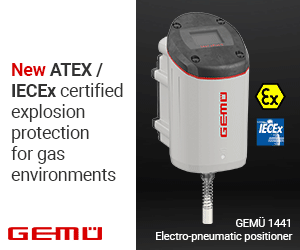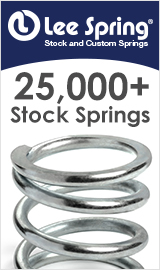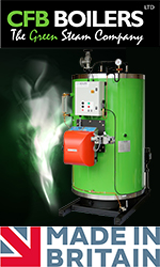Combining rupture discs and safety valves
Safety valves (SVs) and rupture discs (RDs) are both safety devices to protect equipment and processes against excessive pressure and vacuum. However, SVs can quickly reach their limits, particularly where there are major requirements in terms of tightness or if the medium that is used is viscous, sticky or polymerising. A solution involving an upstream RD unites the benefits of both devices. When combined, SVs and RDs are a reasonable and, above all, economic solution for a wide range of applications.
Several widely used standards, such as EN ISO 4126-3 and the german AD2000 Merkblatt A1 and A2 specify certain requirements for a combination of a RD and a SV. To prevent any functional impairments of a SV by the RD, it must be ensured that when the RD responds, there is no fragmentation of parts. Alternatively, suitable design measures or catching contours must be put in place to ensure that the SV cannot be rendered ineffective by fragments. The distance between the RD and the SV must be as small as possible to reduce any pressure drop caused by the pipe. Yet the distance between the RD and the SV also must be big enough to warrant the safe and reliable opening of the rupture device. The RD and the pipe must be configured in such way that the overall pressure drop towards the entry point of the SV is less than 3% of its response pressure. The various standards specify a variety of options for dealing with pressure drop. According to AD2000-Merkblatt A1, the way to deal with pressure drop on any parts of the rupture element which are still in the clamping device after a response has taken place […] is to ensure that the cross section of the clamping device meets the following condition and that the rupture element is mounted directly in front of the SV:
Ageom × α > 1.5 × A0 × αw
where the area Ageom specifies the geometric cross section of the rupture element. This also covers any restrictions of the cross section, e.g. caused by cutting devices or non-opening vacuum supports. The area A0, on the other hand, specifies the narrowest cross-sectional area of flow within the SV. The discharge coefficients α of the RD and αw of the SV are also considered in the equation. According to the standards ASME section VIII, Div. 1, and DIN EN ISO 4126-3, it is also possible to apply a correction factor of 0.9 to reduce the discharge behaviour of the SV ‘artificially’. Alternatively, a single discharge coefficient for the combination of a RD and a SV may be specified by performing an additional testing.
Furthermore, when combining a RD and a SV, a device must be in place to detect or prevent any change of pressure in the space between the two safety devices. Any possible backpressure would influence the burst pressure of the RD and would prevent the reliable functioning of the combination. A relief valve with an alarm pressure switch connected to itsimultaneously signals any improper overpressure. This is a proven solution which prevents and detects improper pressure build up in the space between the two safety devices. If the RD responds, the relief valve closes, and the pressure switch signals that the RD has responded.
website: www.rembe.com



























































































































